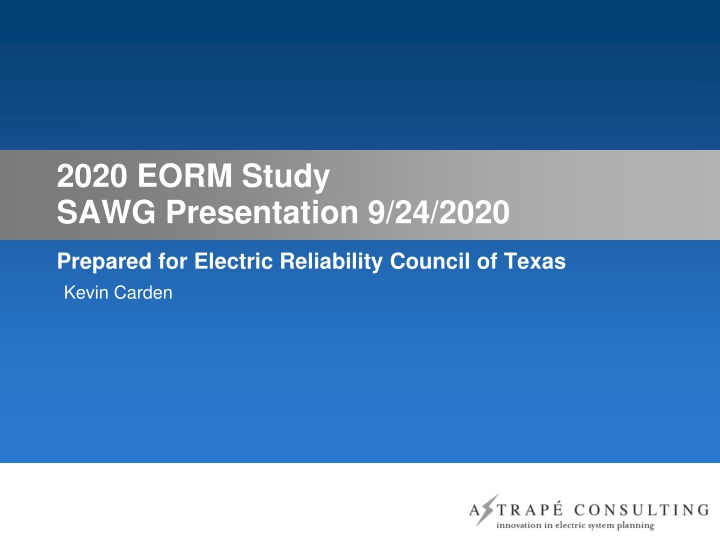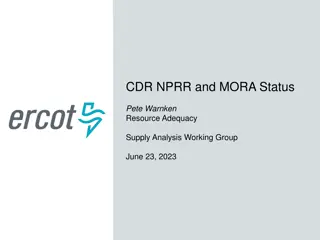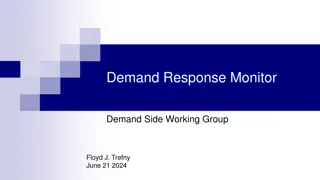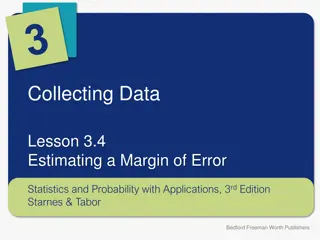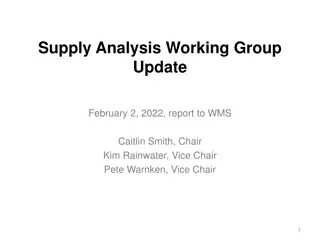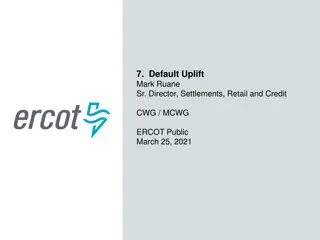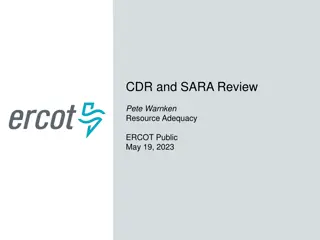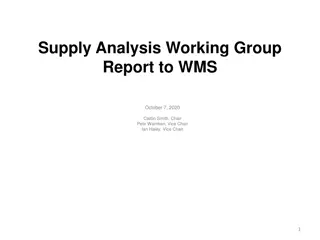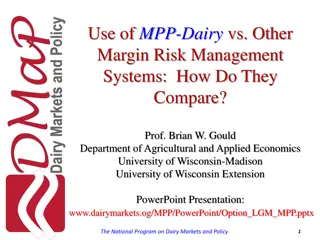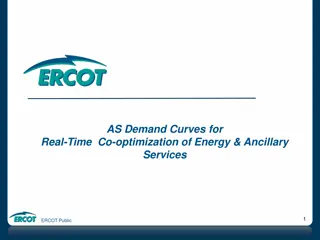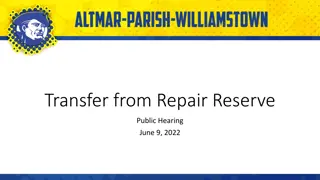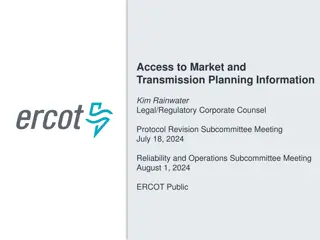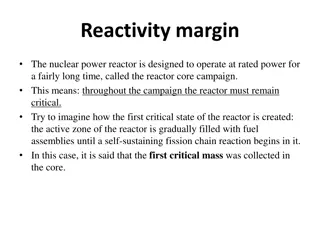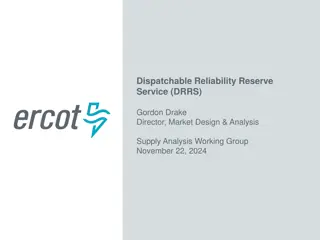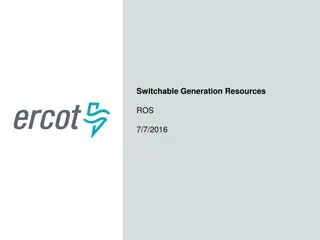ERCOT 2020 Reserve Margin Study Overview
This overview covers key findings from the 2020 ERCOT Reserve Margin Study, including changes in renewable portfolio, implications for reliability, operating reserve demand curve, scarcity conditions, and emergency procedures. The study delves into economically optimal reserve margins, market equilibrium, PRD modeling updates, and more.
Download Presentation

Please find below an Image/Link to download the presentation.
The content on the website is provided AS IS for your information and personal use only. It may not be sold, licensed, or shared on other websites without obtaining consent from the author.If you encounter any issues during the download, it is possible that the publisher has removed the file from their server.
You are allowed to download the files provided on this website for personal or commercial use, subject to the condition that they are used lawfully. All files are the property of their respective owners.
The content on the website is provided AS IS for your information and personal use only. It may not be sold, licensed, or shared on other websites without obtaining consent from the author.
E N D
Presentation Transcript
2020 EORM Study SAWG Presentation 9/24/2020 Prepared for Electric Reliability Council of Texas Kevin Carden
2020 ERCOT Reserve Margin Study Quantify 3 Significant Levels for 2024 Economically Optimal Reserve Margin (EORM) Market Equilibrium Reserve Margin (MERM) 0.1 LOLE physical standard reserve margin Major Changes from 2018 Study Increased wind and solar penetration Updated methodology for modeling PRD ORDC Changes Reference technologies Gas Combustion Turbine 4 Hour Battery Storage 2
Renewable Portfolio Changes Category 2018 EORM Study 2020 EORM Study Wind O 27,809 MW 27,184 MW Wind C 4,131 MW 5,371 MW Wind P - 4,841 MW Solar 3,611 MW 16,001 MW Total Nameplate Renewable Capacity 35,552 MW 53,397 MW Implications for Reliability and Reserve Margin Accounting Renewable ELCC 3
Operating Reserve Demand Curve 2018 Study ORDC 2020 Study ORDC Sources and Notes: ERCOT ORDC Calculation Methodology Paper Summer Hours 15-18 5 5
Scarcity Conditions Emergency Procedures and Marginal Costs Emergency Level Marginal Resource Amount of Resource (MW) Marginal System Cost Trigger Price n/a Generation Variable Price Approximately $20 - $250 Same Approximately $20-$250 Up to $1,000 during load shed n/a Imports Variable Price Same $2,753 (from ORDC)* $4,627 (from ORDC)* $1,020* $1,966* n/a Non-Spin Shortage 700 ORDC x-axis = 3,000 MW n/a Price-Responsive Demand 741 Price $500 - $9,000 Same $3,787 (from ORDC) $5,850 (from ORDC) $1,365 $2,752 n/a Emergency Generation 469.8 ORDC x-axis = 2,300 MW n/a PBPC 200 Price $1,000 - $9,000 Same $3,787 (from ORDC) $5,850 (from ORDC) $1,365 $2,752 EEA 1 30-Minute ERS 691** Spin ORDC x-axis = 2,300 MW $6,394 (from ORDC)* $7,492 (from ORDC)* $1,847* $3,456* EEA1 Spin Shortage A 550 Spin ORDC x-axis = 2,300 MW $3,787 (from ORDC) $9,000 (from ORDC) $2,456 $4,374 EEA 2 TDSP Load Curtailments 262 Spin ORDC x-axis = 1,750 MW $9,000 (from ORDC) $9,000 (from ORDC) $2,456 $4,374 EEA 2 Load Resources in RRS 1,172*** Spin ORDC x-axis = 1,750 MW $9,000 (from ORDC) $9,000 (from ORDC) $2,456 $4,374 EEA 2 10-Minute ERS 76** Spin ORDC x-axis = 1,750 MW $9,000 (from ORDC)* $9,000 (from ORDC) $3,544* $5,514* EEA3 Spin Shortage B 750 Spin ORDC x-axis =1,750 MW EEA 3 Load Shed Variable Spin ORDC x-axis = 1,000 MW VOLL = $9,000 Same Blue font reflects 2018 Study Values *: Price reflects the average price between the upper and lower level of each resource **: 76 10NWS + 666 30NWS + 26 30WS = 767 total ERS (CDR Value). Both NWS and WS are included in the 30-Minute ERS ***: 60% of RRS 6 6
Emergency Procedure Production Cost Differences Note: Figure includes 10-minute and 30-minute ERS, non-spin shortage, emergency generation, PBPC, spin shortage, TDSP, and LRs 7 7
Marginal Resource Technology 2020 Marginal Resource Technology Characteristics 2018 Marginal Resource Technology Characteristics Combined Cycle Alternate: Battery Storage Simple Cycle Simple Cycle Plant Configuration Turbine Configuration Heat Rate (HHV) Base Load Non-Summer Summer Max Load w/ Duct Firing Non-Summer Summer Installed Capacity Base Load Non-Summer Summer Max Load Non-Summer Summer Gross CONE Plant Configuration Turbine Configuration Heat Rate (HHV) Base Load Non-Summer Summer Installed Capacity Base Load Non-Summer Summer Storage Capability Gross CONE GE 7HA.02 1 x 0 GE 7HA.02 2 x 1 GE 7HA.02 1 x 0 (Btu/kWh) (Btu/kWh) 9,138 9,274 6,270 6,312 (Btu/kWh) (Btu/kWh) 9,138 9,274 (Btu/kWh) (Btu/kWh) n/a n/a 6,503 6,553 (MW) (MW) (MW) ($/kW-yr) 371 352 100 100 4 (MW) (MW) 371 352 1,073 1,023 TBD (MW) (MW) ($/kW-yr) n/a n/a $89 1,202 1,152 $95 Note: Based on ambient conditions of 92 F Max. Summer (55.5% Humidity) and 59 F Non-Summer. 8 8
SERVM Simulation Setup and Benchmarking 2019 Market Price Calibration 9 9
EORM 11 11
